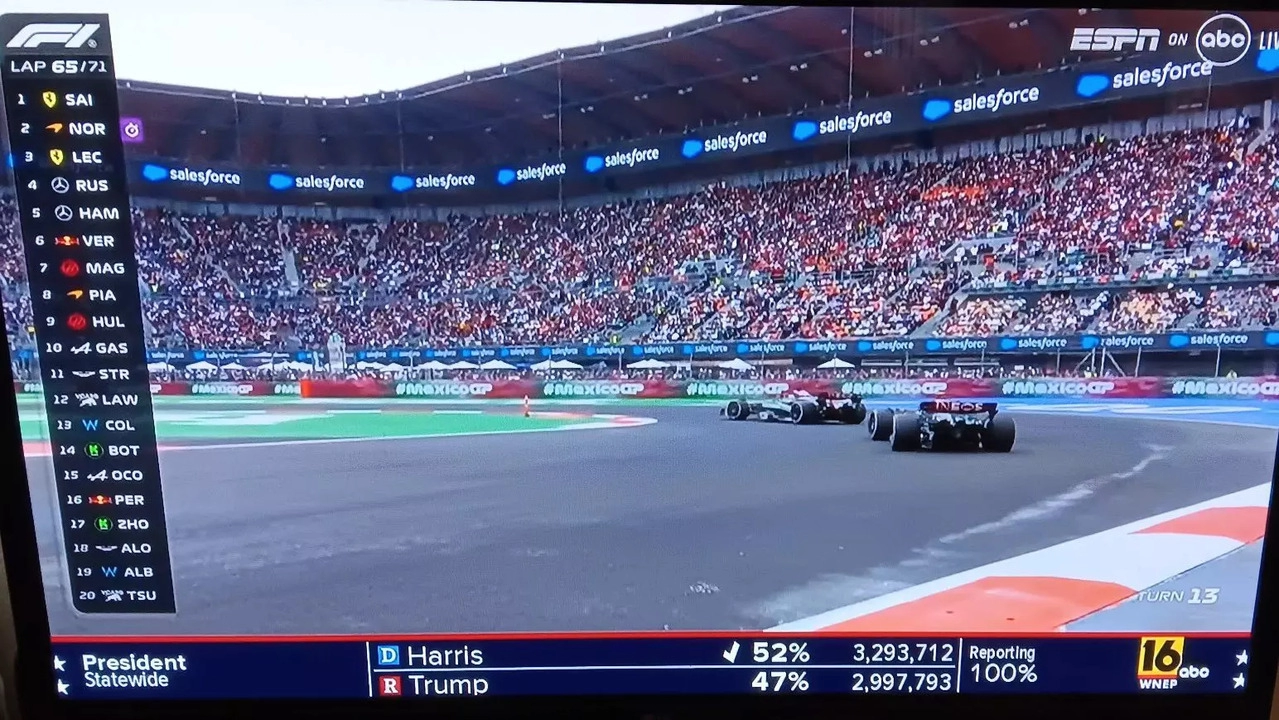 October 31, 2024
October 31, 2024
In a startling turn of events, ABC affiliate WNEP-TV in Pennsylvania inadvertently aired what appeared to be a graphic showing the upcoming U.S. election results—complete with projected vote percentages—for Democrat Kamala Harris and Republican Donald Trump. The graphic displayed Harris winning Pennsylvania with 52% of the vote, while Trump trailed with 47%. The broadcast of these “results” came just over a week before the actual election, during the channel’s coverage of the Formula 1 Mexico Grand Prix, and has since ignited a firestorm of speculation and criticism.
WNEP quickly issued a statement attempting to explain the incident, saying the displayed numbers were “randomly generated” as part of a routine equipment test and were not reflective of any real votes or official data. “Those numbers should not have appeared on the screen, and it was an error by WNEP that they did,” the station reportedly told *Daily Mail*. However, this explanation has not quelled public skepticism. Many viewers have raised pressing questions: Who created these numbers? Why were they calculated to show Harris with a precise lead? And why was the broadcast prepared with specific vote percentages at all?
This “mistake” comes on the heels of similar incidents in prior election cycles, where media prematurely aired or even mistakenly called election outcomes. Notably, during the 2020 presidential election, Fox News was widely criticized for its early call of Arizona for Joe Biden, a move that shocked Trump supporters and reportedly caused outrage within the Trump camp. Other incidents, such as the infamous early call of Florida for Al Gore in 2000, have also fueled doubts over the role of media in shaping or influencing public perception around elections. As Costas Panagopoulos, a political science professor at Northeastern University, explained, “There is tremendous pressure to capture viewers by giving them information as quickly as it is available, but the greatest risk is sacrificing accuracy for speed.”
So, what exactly happened at WNEP-TV? Was this truly an innocent error, or does it hint at a deeper issue within the mainstream media’s handling of election coverage? Critics argue that these incidents reflect a possible bias among networks and raise concerns that some outlets may be influencing public opinion rather than simply reporting on it.
The WNEP incident poses critical questions about the level of transparency and accountability that media organizations are practicing when it comes to elections. Are “random numbers” being displayed merely a matter of technological error, or could there be a more calculated influence at play? And as this story unfolds, it’s likely to add fuel to the ongoing debate about media bias and integrity in the U.S.
For those who believe in a fair and transparent election process, incidents like these add to the growing mistrust of major networks. As election day nears, the public will be watching more closely than ever.
Sources:

